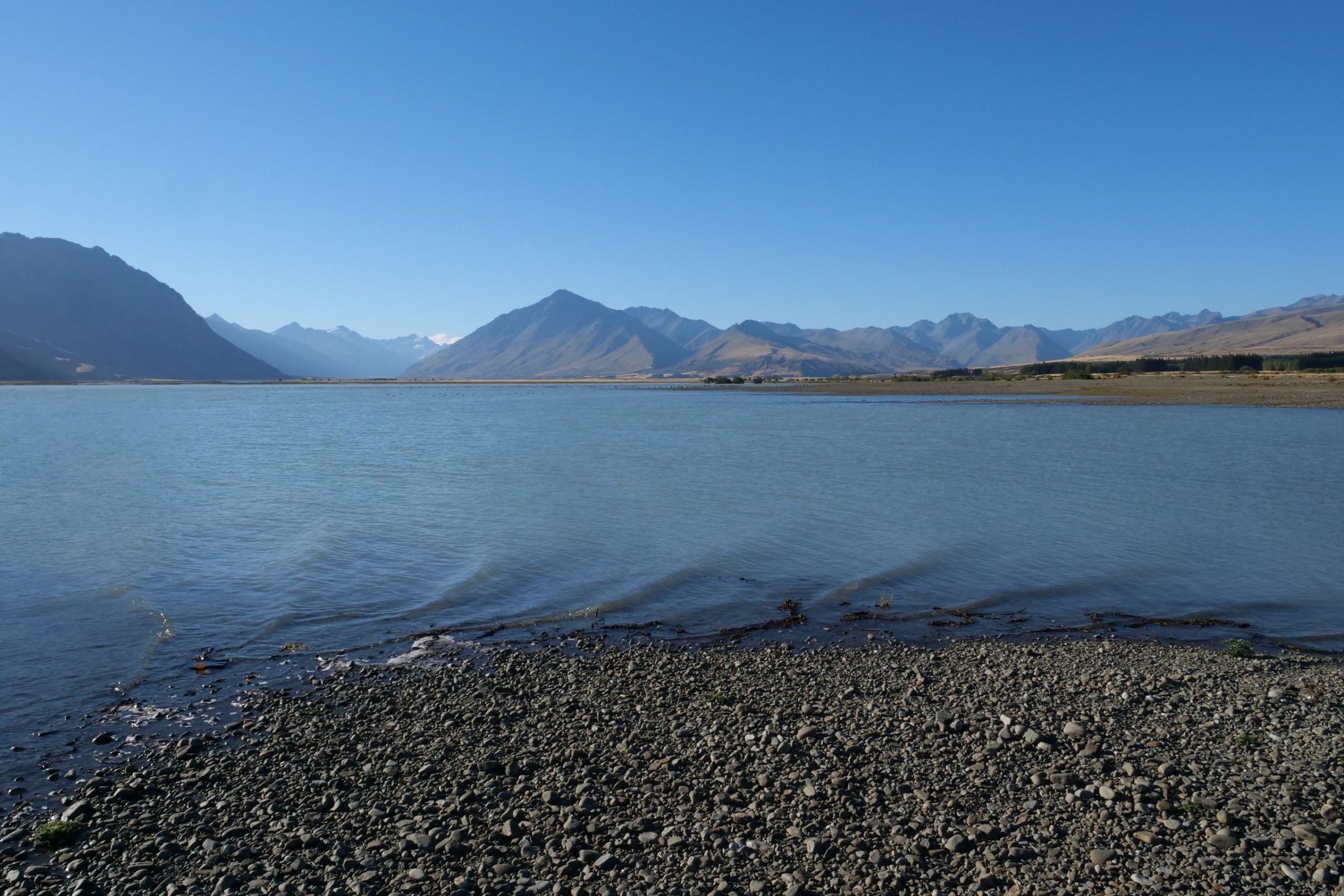Two of many definitions:
the appearance to the eye of objects in respect to their relative distance and positions
a way of thinking about something
Geographically, today’s and tomorrow’s posts involve the same location, on the same autumn 2019 day – just minutes apart, with camera pointing in much the same direction
Musically, they address the same song, as recorded in 1958 and 1956, respectively, for the same label.
Each, however, is remarkably unlike.
Today’s and tomorrow’s music is not mood-matched to the posts’ images, nor does the music have any conceivable connection to beautiful, glacially carved lakes.
New Zealand’s South Island has an abundance of such lakes, including Lake Tekapo.
Around three and a half hours’ worth of easy driving from Christchurch, Lake Tekapo’s surface sits at 710 metres above sea level.
Its glacier-fed waters cover 83 square kilometres, making it New Zealand’s 10th largest lake.
Tekapo’s eponymous little town sits at the lake’s southern end, and its Church of the Good Shepherd – a modest chapel, choicely located – is very probably New Zealand’s most photographed building, and is oft-thronged by tour buses and “forests” of selfie sticks.
Tourists also flock to nearby Mt John, which offers jaw dropping views, a hilltop cafe, and an astronomical observatory.
(local skies are among the world’s clearest and least light-polluted, at least among places that a tourist can easily reach)
There is a road heading north, running above and alongside Lake Tekapo’s eastern side.
Just a few kilometres out of town, that road becomes an unsealed one, but when the weather is benign it is entirely “doable” for drivers of small 2WD hire cars.
However, hardly any tourists “do”.
Picturesque as the lake’s southern end is, the northern end is much more spectacular.
On the splendid autumn afternoon of March 29 2019 my beloved and I took that road, for as far it was sensible to proceed in a 2WD with modest clearance…which was enough for us to cover most of the lake’s eastern shore.
On our drive from the lake’s southern end to almost its northern end we saw a grand total of four vehicles on the dirt/gravel, and I’m sure that not one of them was driven by a fellow tourist.
A few kilometres before one runs out of 2WD-friendly road, there is a (drivable) track that takes you near to Lake Tekapo’s northeastern shoreline.
The picture (copyright Doug Spencer, taken at 5.42 pm) is a wide- angle view, taken just a few minutes easy walk from where we had parked the car.
I suspect that you may be amazed to see what one could see from almost the same spot at almost the same time, but through the different perspective offered by a telephoto lens.
Neither view is better than the other.
—
Similarly, the “same” musical vehicle can produce radically different results, depending on the perspective of the musicians who decide to “drive” it.
The “vehicle” in this instance is one of the most often-covered songs, ever.
Although often considered as a George Gershwin number, or as a Gershwin brothers song, the truth is something else again.
George’s tune owed more than a bit to a song that had been widely sung long before 1935, when the operatic version of Porgy and Bess surfaced.
Further, whilst Ira Gershwin was the lyric writing half of the Gershwin brothers, Ira did not write “their” opera’s more memorable lyrics.
The “other” song, Summertime’s co-parent, so to speak, and Summertime’s not-Gershwin lyricist will be celebrated in tomorrow’s post.
None of the above alters the fact that George Gershwin (1898-1937) was a brilliant composer-arranger.
My unprovable hunch is that he would have been greatly surprised by what arranger Gil Evans and trumpeter Miles Davis did to Porgy and Bess in 1958 (the album was issued in 1959), most especially by their version of Summertime.
I think, however, that if George Gershwin had lived long enough to hear it, he would have loved this:
